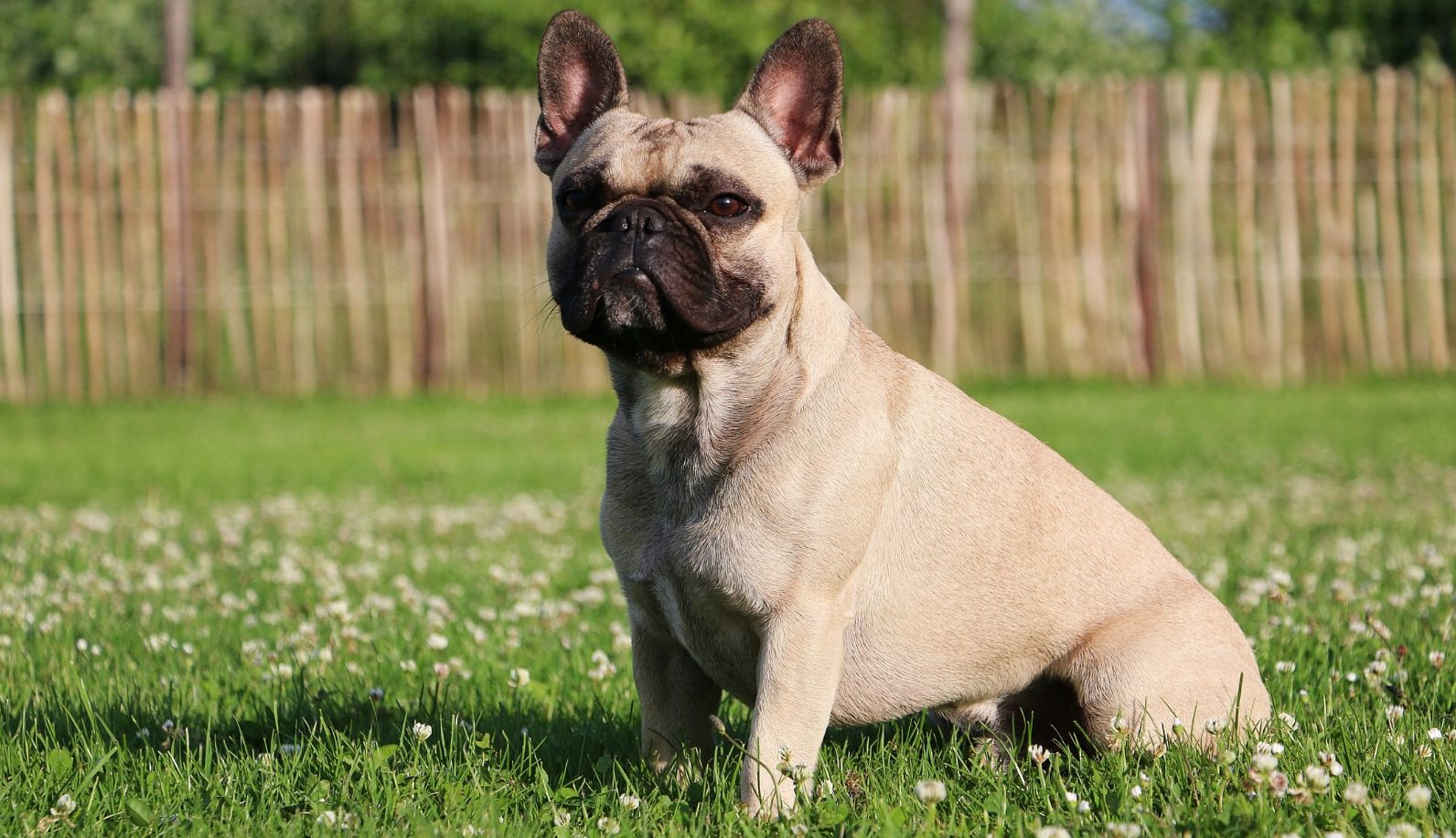-
Activity Level:
low
-
Shedding Level:
moderate
-
Grooming Level:
moderate
-
Trainability:
high
-
Good for Novice Owners:
high
-
Adaptability:
high
-
Kid/Pet Friendly:
often
-
Prey Drive:
low
-
Watchdog:
aware
- Average Size: Small
- Average Lifespan: 10-12 years
- Registered?: aca, akc
French Bulldog Dog Breed Information
Overview
Temperament
Adaptability
Health
Owner Experience
Grooming
Activity Level
Size
Life Span
Did You Know?
While the name of this breed is the French Bulldog, their origins cannot be credited to only France. One of the facts about French Bulldogs is that the idea and reason for the creation of the breed originated in England.
This adorable dog breed, which has always been meant to be a companion, started as a miniature version of the English Bulldog. This mini-version accompanied lace workers across the English Channel and into France during the Industrial Revolution.
Once the dog breed became prominent in France, the subsequent successful crossbreeding of the English Bulldog, Pug, and Terrier led to the creation of the modern-day Frenchie. The French Bulldog we know today originally came to the United States with groups of wealthy Americans who came across them and fell in love while touring Europe in the late 1800s.
While French Bulldogs originally had floppy, rosebud ears, today’s French Bulldog standards are for them to have what are called Bat ears (they stand straight up). The French Bulldog was recognized by the American Kennel Club in 1898 and is a member of the non-sporting group.
The French Bulldog is an easygoing, affectionate, and playful dog that loves their family and gets along well with children. They also love to make new friends, which means they get along well with other dogs, animals, and people. Intelligent and affectionate, this small dog breed certainly wins over hearts and earns its status as a popular companion dog.
Frenchies are not known to bark much, unless you train them into it, but they are naturally alert and make excellent watchdogs. You can train your dog to stop barking early on to ensure you don’t accidentally encourage them to bark a lot. As long as they are well-socialized and trained, they tend to have an open and friendly nature.
The Frenchie is a highly adaptable dog that pretty much adapts to any living situation that includes plenty of love and attention. They’re great dogs for apartment living and also do well in larger homes.
Being a short-snouted, snub-nosed dog breed, they do not tolerate heat very well and are also sensitive to cold. This tends to make them one of the dog breeds that hate winter and you will want to make sure to bundle them up to stay warm while out on cold winter walks.
Because Frenchies bond closely with their families and thrive on attention from them, they do not tolerate long periods of time alone. They can also be prone to developing separation anxiety if they are poorly socialized or you do not work with them on this when they are young.
Potential health concerns to be aware of in French Bulldogs can include cataracts, cherry eye, and entropion. Good breeding practices make a big difference in the health of puppies.
Reputable breeders will screen their dogs to avoid passing preventable issues to puppies. Make sure you ask about the health and genetic history of both parents. You can also ask about any health tests or clearances. Heart and joint certifications are recommended for this breed.
Playful and happy, the French Bulldog is a great fit for a novice dog owner. They are sweet-tempered, eager to please, and eager to train. Occasionally, Frenchies can be stubborn and they do tend to have big personalities.
Although this can sometimes be a challenge for first-time dog owners, it can usually be overcome with consistent and patient training. Puppy training classes are always an option and offer plenty of benefits aside from training.
Standard coat colors for Frenchies are Brindle, Cream, Fawn, and combinations of these. They have a short coat that will shed a little year-round. Weekly brushing and the occasional bath as needed are usually enough to keep this pup’s coat healthy.
In addition to coat care, you will also need to take care of your French Bulldog’s nails, ears, and teeth. Nail trims once or twice a month keep nails from growing too long and causing issues. Weekly ear checks, along with careful cleanings as needed, can help prevent ear infections.
As a small dog breed, the Frenchie is more prone to developing gum disease. Daily dental care plus cleanings at the vet as needed can help prevent this and other painful dental diseases later in life.
You will also need to take care of the wrinkles. Frenchies have hereditary face wrinkles and it is important to keep them clean and dry to prevent skin irritation or possible infection. It’s recommended to use a soft damp cloth to clean between these wrinkles regularly and to make sure they are properly dried afterward.
The French Bulldog is an easygoing companion breed. They can be one of the laziest dog breeds that are couch potatoes. This is not to say that they’re not playful. Frenchies will often be energetic when they play and will try to match their activity to yours.
So, if you live a more active lifestyle, you need to be careful that your French Bulldog is not overexerting themselves trying to keep up with you. As a Brachycephalic or snub-nosed dog, they cannot cool themselves as easily and are extra sensitive to heat.
They can also get winded easily, so be aware of this when playing with your dog or puppy and watch for signs of overexertion. There are safe ways to exercise flat-faced dogs and you can work with your vet on specifics for your Frenchie if needed.
French Bulldogs usually stand 11-13 inches tall and weigh 16-28 pounds.
Frenchies generally live for 10-12 years on average.
With this dog breed being so popular, there are plenty of celebrities who have chosen the French Bulldog as their companion, which also means there are plenty of famous Frenchies out there.
Also, French Bulldogs cannot swim, at least without a life vest. Because of their “head-heavy” build, they require a life vest to stay afloat. They can be taught to swim while wearing one, but they should never be left unattended around bodies of water or swimming pools and require constant supervision while in the water.









